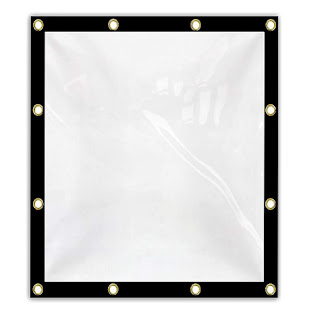Plastic Tarpaulin Types and Benefits
Polyethylene, a plastic substance, is used to make plastic tarps. These Plastic Tarpaulins are made up of either high-density or low-density materials. Light-duty tarps are lighter in weight, have a lower poly covering, and have a lower mesh count. A heavy-duty tarp is thicker and has a greater mesh count, as well as additional poly covering. Light-duty tarps are used to cover goods for shorter periods of time, whereas high-duty poly tarps are preferred for long-term use. Plastic tarps are cheap yet adaptable, and they can be utilized in a variety of scenarios. Plastic tarps provide several advantages, whether at home, on the road, or in a campground. These can shield people and their belongings from the elements such as the sun, rain, dust, and debris. These are lightweight, simple to pack and transport, and just as simple to unfold for a number of applications. Plastic tarps come in a variety of colors, sizes, designs, and strengths. After hurricanes and other catastrophic storms, you've probably seen blue tarps used to temporarily fix the roofs of houses and other structures. These tarps are lightweight, robust, and waterproof, making them a cost-effective option to cover the interior of a structure until substantial repairs can be made. Camping with plastic tarps is also a good option. These tarps are ideal for covering things that need to be protected from rain, direct sunlight, heat, wind gusts, and hail. Side curtains in transportation are made of weather covers such as roll tarps, commercial roof covers, road management covers, cover yarn rain, hay bale covers, rolling canvas, or carrying cover goods.
These Tarpaulins Sheet coverings are water-resistant and UV-resistant. However, they are not breathable. Agribusiness, creating exchanges, taking shelter, floating, and, of course, designing covers are all examples. Organizing, painting, dashing, and capacity are only a few of the uses. To cover outdoor spaces, they also create walls, tents, and restaurants. Because light may readily flow through these sheets, damaging the sun, they are ideal for greenhouse building. There are different types of plastic tarps, such as vinyl or mesh tarps. Vinyl-laminated, laminated, or heated poly tarps are available. Vinyl tarps are incredibly durable and resistant to tears. As a reason, they can be used in industrial settings. Snow, heavy rain, heat, or extremely cold temperatures are all conditions that these can withstand for years. Vinyl covers are thicker and more resistant to abrasion than other types of tarps. Mildew, oil, and even acids are not a problem for them. Because of their toughness, they are ideal for heavy-duty applications. Mesh tarps are made of porous textiles that let sunlight, air, and moisture through. These tarps include grommets along the sides that allow users to tie it down. Mesh tarp hems are double-stitched. These are available in a range of sizes and colors. These reflect a portion of the sun's UV rays. A vinyl-coated coloured mesh tarp does not block more than 55% of a sun's rays. Polyethylene mesh tarps may screen up to 90 percent of the sun's rays. Polypropylene mesh tarps provide the best protection against the sun's rays, shielding up to 95percent of UV radiation.




This comment has been removed by the author.
ReplyDeleteThanks for sharing this information.
ReplyDeleteWe are the leading tarpaulin manufactures in Kerala The International Tarpaulin Company, Kerala.
ITC,provides the best quality tarpaulin products and exclusive services.